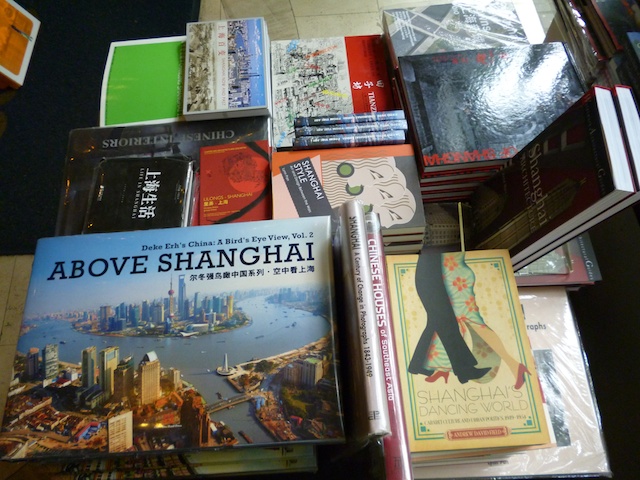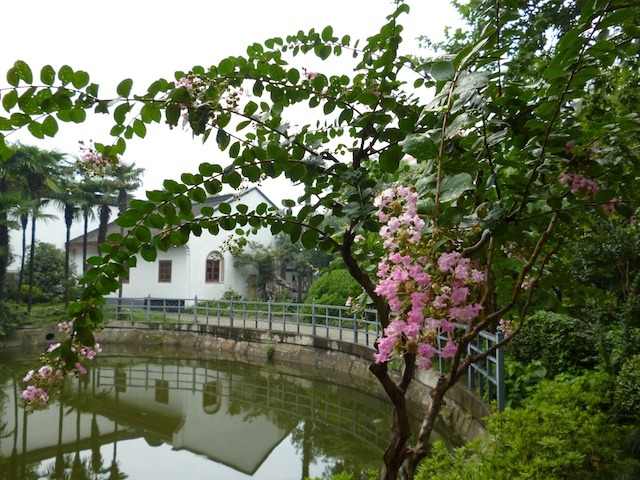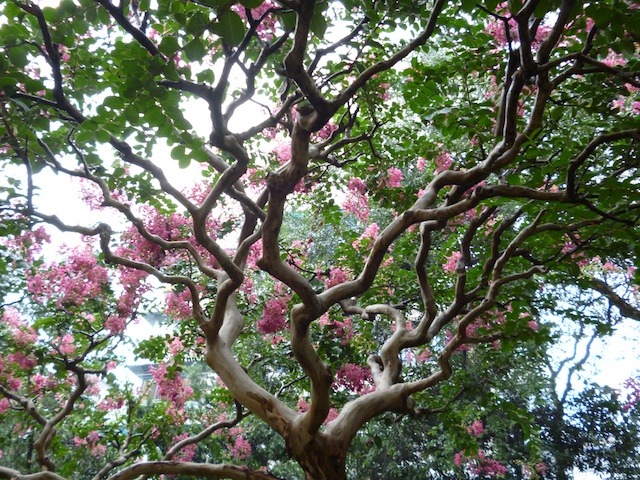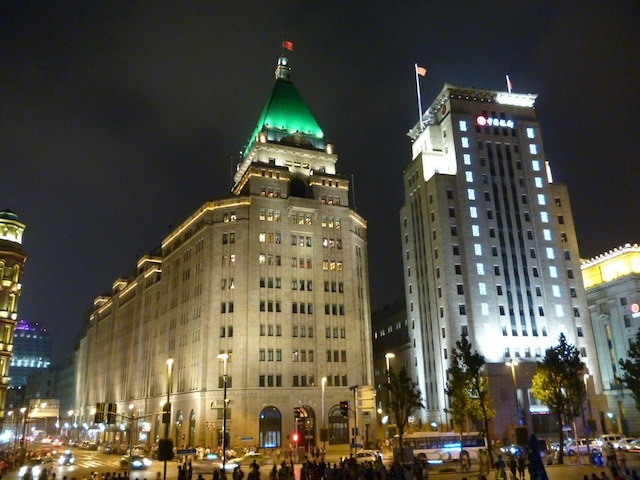Since spending the summer in Seoul, I've been back in Shanghai for nearly a week now. While I was deeply impressed with the cleanliness and efficiency of Seoul, the politeness of the people, and the variety of life and nightlife in that city, it sure felt good to return to a city whose daily life and nightlife I know so well, and where everyone speaks my language: Mandarin Chinese with a Shanghai twist. Over the past week, I've been readjusting to life in China's great metropolis.

Some Shanghai books on display at Garden Books on Changle Lu near the corner of Shaanxi Nan Lu
In contrast to Seoul and Tokyo, Shanghai is a city of incredible contrasts, where deeply ingrained poverty rubs up against towering wealth. The other day while walking to my neighborhood park, Zhabei Gong Yuan, I snapped this photo of some local workers heading to a job:

I don't recall any scenes like this in Seoul, which seems to be dominated by a middle class who drive around in their own cars. Even the construction workers in Seoul look like they are well trained and well paid, compared to the average Chinese construction worker from the provinces (I have been photo-documenting construction workers in Shanghai for years now). I'm sure that Seoulsiders would argue otherwise, or that the middleclassification of the city is a very recent phenomenon. But I don't recall much in the way of beggars in Seoul--I'm told the government and their thugs keep out the riff raff. Surely that happens here too, but on every street in Shanghai one passes by beggars of all shapes, ages, and sizes. At least we aren't tripping over dead bodies, as the Shanghailanders of the old days used to do. Every year, thousands of bodies were carted away by the settlement authorities. My colleague Christian Henriot is writing a history of death in Shanghai--can't wait for that one to come out. Heh heh, being a little facetious here Christian, but seriously, what a morbid topic you've chosen! yet one that is admittedly important and understudied. I choose to study life and the creative ways that people coped with terrible times. Anyhow, I digress.

Back to Zhabei Gong Yuan. This park and garden is a hidden gem in the bland and dystopian regime of the Shanghai cityscape. I have spent a lot of time in many of the city's parks and gardens, and I daresay that Zhabei Gong Yuan ranks up there at or near the top. It is as charming as the legendary gardens of Suzhou, even more charming in a way, since it is used daily by local people and not relegated to a museum piece visited by busloads of photo-snapping tourists. The only complaint I have about that is how noisy the music and singing can become, since every morning several dancing groups compete to blast their own music as loudly as possible and we can hear it from our 18th floor apartment overlooking the park.

The sheer variety of plants and landscapes makes Zhabei Park a masterpiece of urban gardens. It definitely rivals the gardens that I came to know and love in Sapporo (now that was a fantastic city!). I took these photos just after a heavy rain last week.

But of course no return to Shanghai is complete without a visit to the Bund at night. One needs to see those postmodern skyscrapers of Pudong's Lujiazui District glowing in the dark in order to feel that one is truly back in the fragile dreamworld of Chinese hypermodernity.

One has to stroll amidst tens of thousands of gawking tourists from other provinces in China and other countries around the world. They used to come to gawk at the buildings of the Bund, such as the famed Peace Hotel (formerly the Cathay Hotel and Sassoon House). This Art Deco hotel built in 1929 and financed by the Sephardic Jewish real estate tycoon Victor Sassoon is a monolithic masterpiece and a testament to the greatness of the city back in the good old days when those aforementioned Shanghailanders were batting away beggars with their canes and strolling gingerly over the carcasses of the poor victims of China's battle with modernity as they made their way to the local gym to have a workout.

It was here that Sassoon held his wild parties, inviting other Shanghailanders to fancy dress balls held in the eighth floor ballroom and dining hall. On one such occasion, or so it is told, Sassoon held a "shipwreck" theme party and one couple came naked and dripping wet, draped only in a shower curtain. Another house that Sassoon built was the Broadway Mansions, located just across the Garden Bridge.

In the lobby of this building, now a hotel catering to corporate and government Chinese tour groups eager to 吃公款 (eat public funds), I found this wonderful painting of Shanghai and decided to make it the basis for my new banner.

Shanghai does have a Fritzlangian quality to it and this painting definitely captures that tangled intensity well. Neal Stephenson would like this painting I think. Hey Neal, when are you coming back to Shanghai?